Last updated: March 11, 2022
Article
Junior Ranger Archeology Program
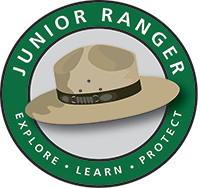
Junior Ranger Pledge: As a Junior Ranger, I will share what I have learned with others. I promise to continue to explore the archeological and cultural heritage sites in our national parks and within my city, state, and nation and help protect them so future generations can enjoy them.
Print this page
Hint: click on the Answer Keys before printing. If you can't print this page, you can complete the activities with just a pencil and paper (and maybe some help from an adult).
MWAC Word Scramble
Unscramble the bold/underlined words to learn more about what archeologists do! This word scramble also has clues to help you complete the What Do Archeologists Study and Tool Match-Up activities.
The WIDEMST Archeological Center (MWAC) is an office of the National Park Service. AOLCHREOGSTSI at MWAC study, interpret, and preserve archeological TEISS in national parks throughout the Midwest.
An FRACTIAT is anything that has been made or used by someone. Archeologists study these objects as clues that help show how people in the past lived. Archeologists need all the clues from a site to understand what happened there. You can help archeologists PSRVEERE sites by leaving artifacts where you find them.
Some artifacts are thousands of years old, and others can be just 50 years old. Some archeologists study stone LOOST and others study YPTOTER. They can also study sites such as homesteads, with cabins or farmhouses, and other historic places.
Archeologists use shovels and OWLETRS to carefully XCVAEATE sites. They record detailed information about sites by mapping all artifacts using a tape measure and other tools. A NEESRC is used to sift through the soil to find small artifacts like buttons or beads.
Archeologists only excavate a site for a good reason. For example, archeologists excavate sites that might be destroyed by construction or flooding. Archeologists PREOTCT and preserve sites so that people in the future can NEALR from them.
2-ARCHEOLOGISTS
3-SITES
4-ARTIFACT
5-PRESERVE
6-TOOLS
7-POTTERY
8-TROWELS
9-EXCAVATE
10-SCREEN
11-PROTECT
12-LEARN
TOOL MATCH-UP
Match the tool with how it is used by archeologists. Read the MWAC Word Scramble for clues.
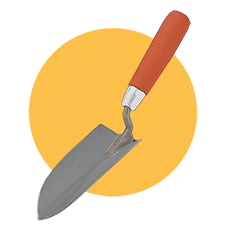
1----------------------------A
to clean dirt off artifacts during excavation

2----------------------------B
to carefully excavate (dig) small areas around artifacts
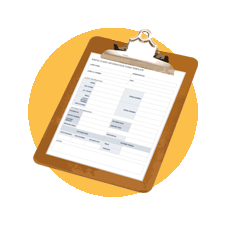
3----------------------------C
to sift through soil to find small artifacts

4----------------------------D
to carefully excavate larger areas
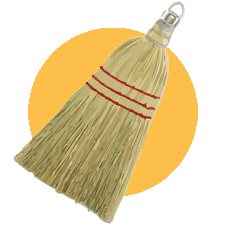
5----------------------------E
to help measure and record the location of artifacts
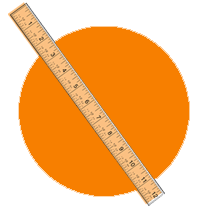
6----------------------------F
to take notes and record information
2-C
3-F
4-D
5-A
6-E
WHAT DO ARCHEOLOGISTS STUDY?
Write the letter of the things that archeologists study (or circle the picture). Read the MWAC Word Scramble for clues.

Explain why archeologists DON'T study the things you didn't choose.
E
F
G
H
Archeologists study the human past by looking at the things people left behind. Other scientists study the things not related to people in this grouping. For example, paleontologists study dinosaurs. Some of the pictures can be interpreted in more than one way, so you might have chosen different letters but have good reasoning!
Timeline
Timelines are a good way to show the order of events in the past. Put the events below in order on the timeline. Place the letter by the event in the correct spot on the timeline.

B. Daniel Freeman became the first homesteader 1863
C. The bow and arrow was used by Native Americans, starting 1,000 years ago
D. Pottery became widely used by Native Americans living in Nebraska, starting 2,000 years ago
E. Native Americans were living near Scotts Bluff, starting around 8,000 years ago
F. Hopewell people began making earthworks in Ohio, starting about 2,200 years ago
What does the timeline show us? __________________________________________________
_______________________________________________________________________________
_______________________________________________________________________________
Artifact Analysis
Archeologists study artifacts from hundreds or even thousands of years ago. The artifacts they discover are often broken. Archeologists must examine artifacts carefully to discover who made them and how they may have been used. Look at the 3D model of an artifact. Then, answer the questions below to help you analyze the artifact.

What material do you think it is made of (stone, wood, bone, metal, glass, plastic, clay, paper, leather, cotton)?
Describe the artifact. What shape is it? What color is it? What texture does it have (what do you think it feels like)?
Is the artifact whole, or is it a piece that broke off something larger?
When do you think it was made?
Who do you think made it?
What do you think it was used for?
Can you answer all of these questions by just looking at this artifact?
What other information do you need to answer these questions?
Putting the Pieces Together
Looking at only one artifact is like looking at one puzzle piece and trying to imagine the entire picture. Archeologists study artifacts to learn about the past. Archeologists also look at groups of artifacts that are found close together, called assemblages, to help learn about what may have happened in an area. Think of different activities that you do every day. Now think of the objects you use with those activities. If archeologists in the future found those objects, they might be able to figure out what activities you did.
Slide the arrow left and right to see two different pictures of an assemblage of artifacts. What do you think happened in each picture in the past?


Left image
What do you think happened here in the past?
Right image
Looking at the picture now, would your answer change?
Hopewell Pottery
Pottery was widely used by American Indians starting about 3,000 years ago. It was mainly used for cooking and storing food. They collected clay sometimes found near rivers and streams. Sand, crushed shell or rock was mixed with the clay to prevent the pot from cracking when it was later fired. Next, they formed the clay into the shape of a pot. Once the pot was formed, they used sticks, shells, paddles wrapped with string or fabric, and other objects to make designs and decorations. The pots were hardened in a large fire so they would not break easily.

NPS photo/Allan Smith
Decorative styles and container shapes changed throughout time. Archeologists can use these shapes and styles to help determine how old an archeological site is. Usually, pottery vessels are found broken. If they find enough pieces of the same pot, an archeologist might be able to put the pot back together to see the whole shape of the pot.
This pot came from the Riverbank site at Hopewell Culture National Historical Park in Ohio. This pot has four feet on the bottom to hold it up.
What do you think this pot may have been used for?
When archeologists find pottery, what does it tell us about the people who made it?
Design your own pot
Draw a pot in the box below with your own design. What is the pot used for? What does the decoration mean? What would archeologists in the future learn about you if they found this pot?

It’s easy to make your own pot!
All you need is air-dry clay (from any craft store) and twigs, shells or any other “tools” found in your yard or neighborhood. Be sure to ask an adult for help. Roll the clay into long snake-like strips. Coil the strips into the shape of a bowl or pot. Smooth out the sides with your hands. Rub a little water on your pot to help mold the clay if it cracks or dries too quickly. Create designs on your pot with the things you have gathered. You can also use your fingers to create designs. Let your pot dry for a few days. Don’t forget to cover your table or work surface with old newspapers so it doesn’t get dirty.
Hot Springs National Park
Hot Springs National Park, located in Arkansas, was set aside by President Andrew Jackson in 1832 to protect the springs and to make them available for everyone to enjoy. The hot springs have been used as healing baths to treat many illnesses and for relaxation. Many bathhouses were built and rebuilt over the years. Since the beginning, the park and the bathhouses have changed a lot.
Slide the arrow right and left to see two pictures of the park entrance, one from the 1890s and one from today.


Left image
Park Entrance in the 1890s
Right image
Park Entrance Today
Midwest Archeological Center Virtual Ranger Badge
Congratulations!

NPS/Midwest Archeological Center
A few ideas for displaying your badge:
- Print your badge, use it as a template to cut a piece of cardboard matching the shape, and then glue the paper and a pin onto the cardboard!
- Use tape to secure it to your park passport or scrapbook!
- Set it as your background on a phone or tablet!
